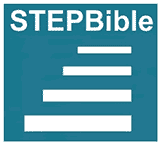Theology on the Web helps over 2.5 million people every year to find high quality theological resources that will help to equip them to serve God and to know Him better (2 Timothy 2:15). Like other websites that provide free services, it is dependent on donations to enable it to grow and develop and only 0.004% of visitors currently do so. If you would like to support this site, please use one of the options to the right of this message.
Synopsis
CYRIL OF JERUSALEM, b. probably in 315; I d. probably
March 18, 386; spent his whole life in Jerusalem, where lie was consecrated
deacon, in 335, by Bishop Makarius, and presbyter, in 345, by Bishop Maximus,
and where he finally became bishop himself. In the Arian controversy he tried
to maintain a neutral position, in which, however, he did not succeed. After
the death of Maximus or, as Socrates and Sozomen have it, after the expulsion
of Maximus by the Arians, Cyril became bishop by the
aid of this party. At all events, he was consecrated by Acacius of
Cæsarea, who was an Arian. But the harmony between him and Acacius did
not last long. According to the seventh canon of the Council of Nice, the
Bishop of Jerusalem ranked immediately after the Bishops of Rome, Alexandria,
and Antioch, though with reservation of the right of the Bishop of
Cæsarea as metropolite. From this point the disagreement began; but it
was greatly inflamed by religious discrepancies. Acacius cited Cyril before
him; and, when the latter declined to appear, the former had him deposed by a
council of only a few bishops (358). Cyril appealed to another and larger
council, held at Seleucia (359), and mostly composed of Semi-Arians; and this
council deposed Acacius. But in 360 a still larger council of Arians, held in
Constantinople, confirmed the deposition of Cyril; and it was only the death of
Constantius and the accession of Julian which enabled Cyril to return to his
see. During the last twenty years he lived in comparative peace and quiet,
though he was expelled twice more, under Valens.
Of the works ascribed to Cyril, the homilies
are certainly spurious, though with the exception of the one on the impotent
man at the Pool of Bethesda, first published by Thomas Mules in 1703, which
seems to be genuine. The letter addressed to the Emperor Constantius, and
giving an account of a vision of a radiant cross in the heavens, is, at all
events, much interpolated. But the catecheses, or catechetical lectures,
are genuine, and are of the greatest interest, both for the history of the
Christian dogmas, and for the true understanding of the liturgy and
cateohetical methods of the ancient Church.
C. Burk, "CYRIL OF JERUSALEM," Philip Schaff,
ed., A Religious Encyclopaedia or Dictionary of Biblical, Historical,
Doctrinal, and Practical Theology, 3rd edn., Vol. 1. Toronto, New York
& London: Funk & Wagnalls Company, 1894. p.595.
 |
Cyril of Jerusalem
(Christian Classic Ethereal Library) |
 |
 Cyril of Jerusalem, Works,
Vol. 1. Fathers of the Church, Vol. 61. Leo P. McCaulkey & Anthony A.
Stephenson, trans. Washington, D.C.: Catholic University of America Press. Hbk.
ISBN: 081320061X. pp.279. Cyril of Jerusalem, Works,
Vol. 1. Fathers of the Church, Vol. 61. Leo P. McCaulkey & Anthony A.
Stephenson, trans. Washington, D.C.: Catholic University of America Press. Hbk.
ISBN: 081320061X. pp.279. |
 |
Cyril
of Jerusalem, Works, Vol. 2. Fathers of the Church, Vol. 64. Leo P.
McCaulkey & Anthony A. Stephenson, trans. Washington, D.C.: Catholic
University of America Press. Hbk. ISBN: 0813210267. pp.265. |
 |
E.H. Gifford, trans., Nicene &
Post-Nicene Fathers, 2nd series, Vol 7. Edinburgh: T & T Clark,
1894. |
 |
Alexis Douval, "The Date of Cyril of
Jerusalem's Catecheses," Journal of Theological Studies 48.1 (1997):
129-132. |
 |
Alexis
James Douval, Cyril of Jerusalem, Mystagogue: The Authorship of the
"Mystagogic Catecheses." Patristic Monograph Series. Washington, DC:
Catholic University of America Press, 2001. Hbk. ISBN: 0813210798. pp.314. |
 |
 Jan Willem Drijvers, Cyril of Jerusalem: Bishop and
City. Leiden: Brill, 2004. Hbk. ISBN: 9004139869. pp.216. Jan Willem Drijvers, Cyril of Jerusalem: Bishop and
City. Leiden: Brill, 2004. Hbk. ISBN: 9004139869. pp.216. |
 |
![Adrian Fortescue [1874-1923], The Greek Fathers](images/books3/greek-fathers_fortescue-tb.jpg) Adrian Fortescue [1874-1923], The Greek Fathers. London: The Catholic Truth Society, 1908. Hbk. pp.255. Adrian Fortescue [1874-1923], The Greek Fathers. London: The Catholic Truth Society, 1908. Hbk. pp.255.  pdf [This material is in the Public Domain] pdf [This material is in the Public Domain] |
 |
J. Harold Greenlee, The Gospel Text
of Cyril of Jerusalem. Studies and Documents XVII. Silva Lake & Carsten
Høeg, eds. Copenhagen: Ejnar Munksgaard, 1955. |
 |
P. Jackson, "Cyril of Jerusalem's
Treatment of Scriptural Texts Conerning the Holy Spirit," Traditio 46
(1991): 1-31. |
 |
P. Jackson, "Cyril of Jerusalem's Use
of Scripture in Exegesis," Theological Studies 52 (1991):
431-503. |
 |
W.R. Jenkinson, "The Image and the
Likeness if God in Man in the Eighteen Lectures on the Credo of Cyril of
Jerusalem (c. 315 - 387)," Ephemerides Theologicae Lovanienses 40
(1964): 19-47. |
 |
Peter van Nuffelen, "The Career of Cyril of Jerusalem (c. 348-87): A Reassessment," The Journal of Theological Studies 58.1 (April 2007): 134-46. |
 |
Hugh M. Riley, Christian Initiation:
A Comparative Study of the Interpretation of the Baptismal Liturgy in the
Mystagogical Writings of Cyril of Jerusalem, John Chrysostom. Washington,
D.C.: Catholic University of America Press, 1974. ISBN: 081320531X. |
 |
A.A. Stephenson, "St. Cyril of
Jerusalem and the Alexandrian Christian Gnosis," Studia Patristica 1
(1957): 142-146. |
 |
Philip Wainwright, "The Authenticity of
the Recently Discovered Letter Attributed to Cyril of Jerusalem," Vigiliae
Christianae 40.3 (1986): 286-293. |
 |
P.W.L. Walker,
"Gospel Sites and "Holy Places": the Contrasting Attitudes of Eusebius and
Cyril," Tyndale Bulletin 41.1 (1990): 89-108.  pdf pdf |
 |
Peter
W.L. Walker, Holy City, Holy Places? Christian Attitudes to Jerusalem and
the Holy Land in the Fourth Century. Oxford: Early Christian Studies, 1990.
Hbk. ISBN: 0198144679. pp.31-34, 331-346. |
 |
E. Yarold, "The Authorship of the
Mystagogic Catachesis Attributed to Cyril of Jerusalem," Heythrop
Journal, 19 (1978): 143-161. |
Related Subjects
 Jan Willem Drijvers, Cyril of Jerusalem: Bishop and
City. Leiden: Brill, 2004. Hbk. ISBN: 9004139869. pp.216.
Jan Willem Drijvers, Cyril of Jerusalem: Bishop and
City. Leiden: Brill, 2004. Hbk. ISBN: 9004139869. pp.216. ![Adrian Fortescue [1874-1923], The Greek Fathers](images/books3/greek-fathers_fortescue-tb.jpg) Adrian Fortescue [1874-1923], The Greek Fathers. London: The Catholic Truth Society, 1908. Hbk. pp.255.
Adrian Fortescue [1874-1923], The Greek Fathers. London: The Catholic Truth Society, 1908. Hbk. pp.255.  Edward Yarnold S.J. (Editor), Cyril of Jerusalem.
Routledge, 20001. Pbk. ISBN: 0415199042. pp.240.
Edward Yarnold S.J. (Editor), Cyril of Jerusalem.
Routledge, 20001. Pbk. ISBN: 0415199042. pp.240. 







 Cyril of Jerusalem, Works,
Vol. 1. Fathers of the Church, Vol. 61. Leo P. McCaulkey & Anthony A.
Stephenson, trans. Washington, D.C.: Catholic University of America Press. Hbk.
ISBN: 081320061X. pp.279.
Cyril of Jerusalem, Works,
Vol. 1. Fathers of the Church, Vol. 61. Leo P. McCaulkey & Anthony A.
Stephenson, trans. Washington, D.C.: Catholic University of America Press. Hbk.
ISBN: 081320061X. pp.279.


